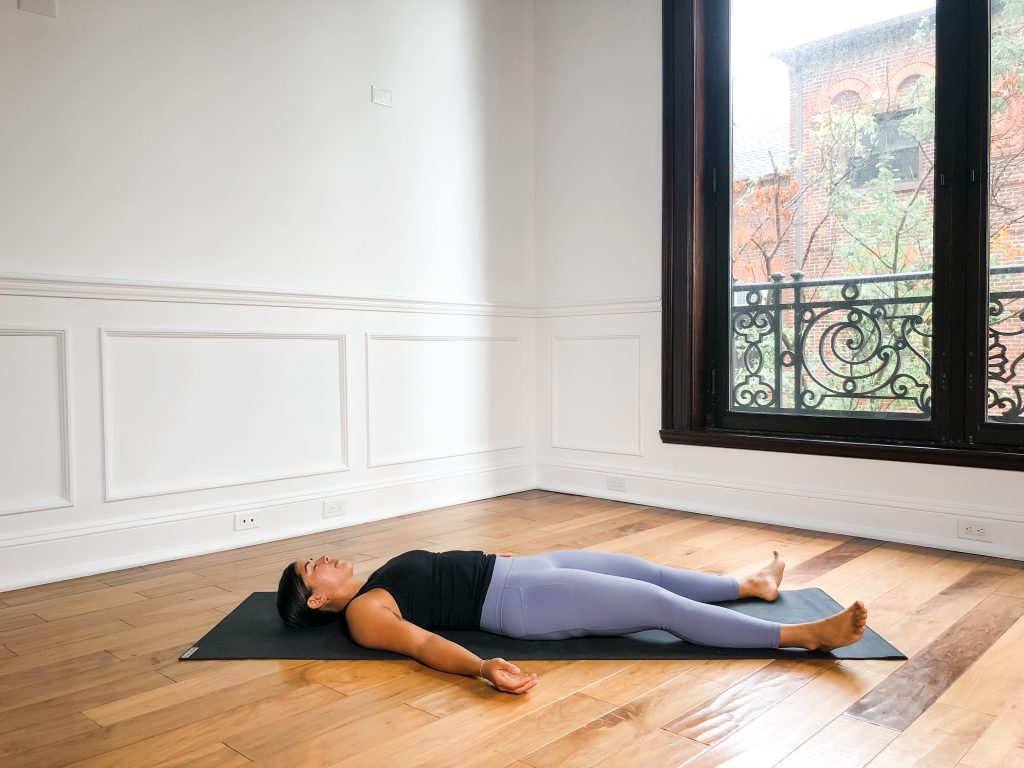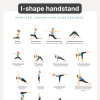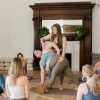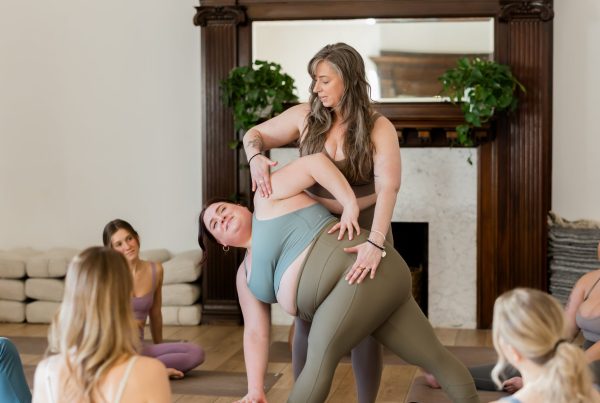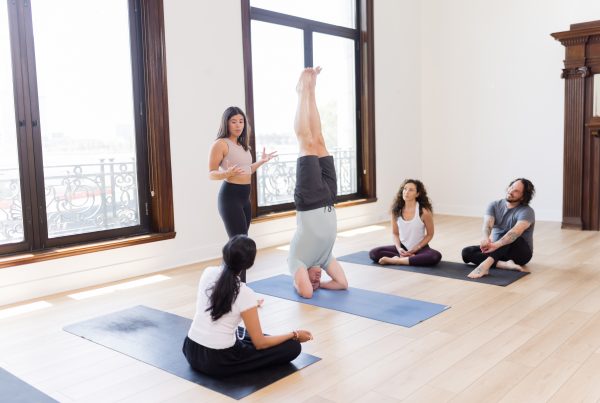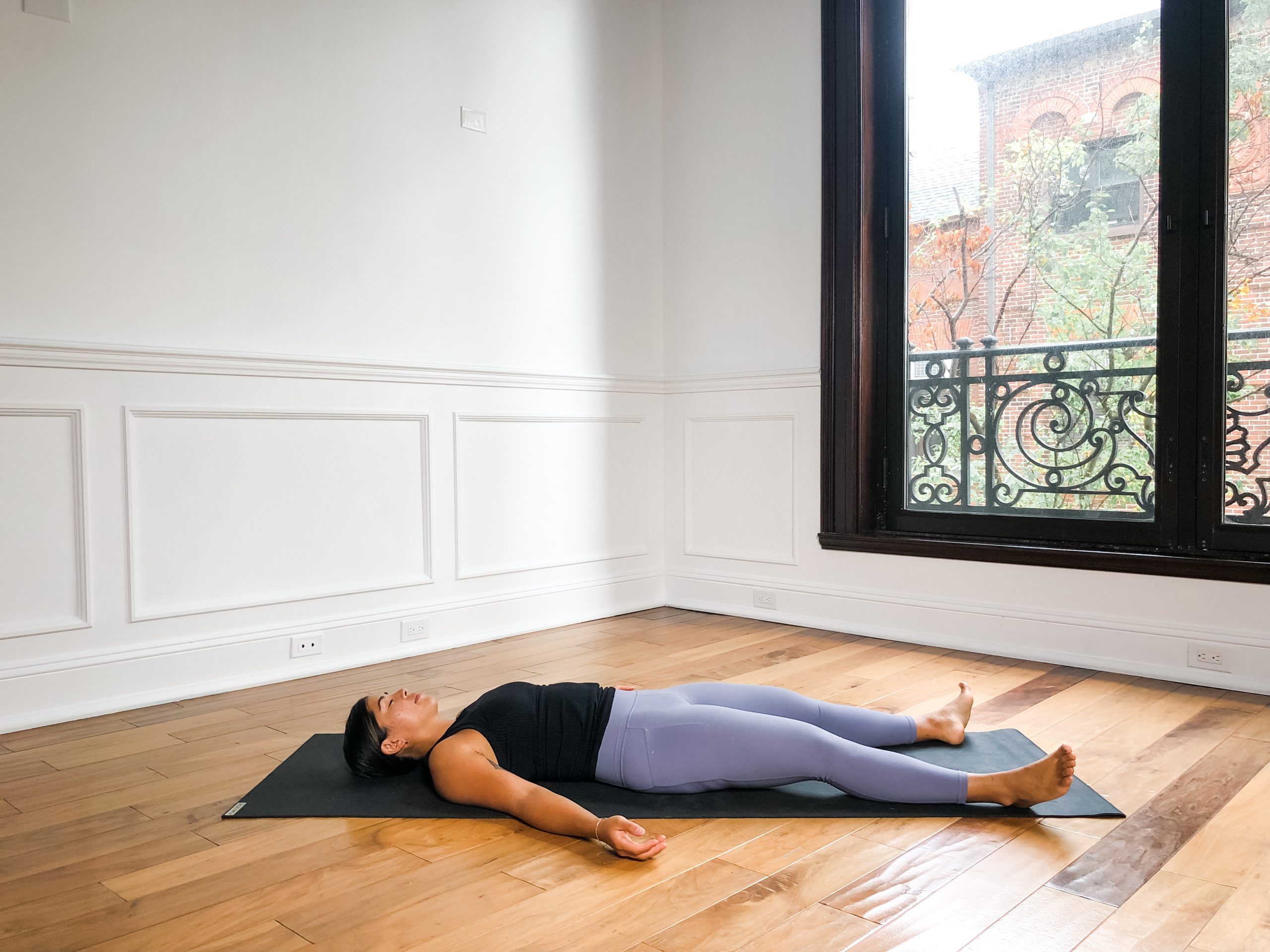
This week’s class theme is centered around the final niyama: Ishvara Pranidhana, which translates to surrender.
It makes sense that this would be the final niyama. Each niyama has shed some light on the specific duties and observances one should use as a guideline towards self-realization. After all is said and done, after we have purified ourselves, cultivated contentment, put ourselves through the fire of transformation, opened ourselves up to deep self-study, the only thing left to do is surrender.
Now, surrender does not mean throw your hands up, come to your knees, and stop acting. It is not a way to say “FORGET IT…I GIVE UP!” This is often how I perceive people in the west to approach this concept. Rather, surrender asks us to continuously show up with integrity to do the work while simultaneously giving in to the flow of life.
Like I mentioned, often when we hear the word “surrender” it can be taken as a negative. It can be seen as a failure…like we are giving up on an opportunity or like we are not living up to some set expectation. When we are asked to surrender we are asked to let go of our “control” of life. And this can be quite uncomfortable for many people, but it is absolutely necessary if we ever wish to liberate ourselves from the worries, anxieties, and fears that occur as part of living as a human on this Earth.
Ishvara Pranidhana calls forth the feminine nature in all beings and calls for us to soften and allow the winds of life to take us as they may. And if we are open to it, we may realize that the winds are actually taking us to a better place than we ever could have imagined.
Peak Pose: Corpse Pose (Savasana)
When I think of surrender, there is no other pose that comes to mind besides Corpse Pose, or savasana. Savasana is literally preparing the body for death and is the ultimate pose to release oneself to the currents of life. It is taken following work, whether that be pranayama, meditation, or asana and brings balance to the fire we bring to said work. While savasana may look easy, practitioners know that this can be one of the hardest poses to achieve. As soon as we start to steady the body, the mind goes wild and all we want to do is fidget and move. This pose requires a calm nervous system to support a calm body and calm mind. The ideas for this sequenced class is inspired by creating a well balanced class with poses intentionally geared towards grounding.
Supporting Pose 1: Child’s Pose (Balasana)
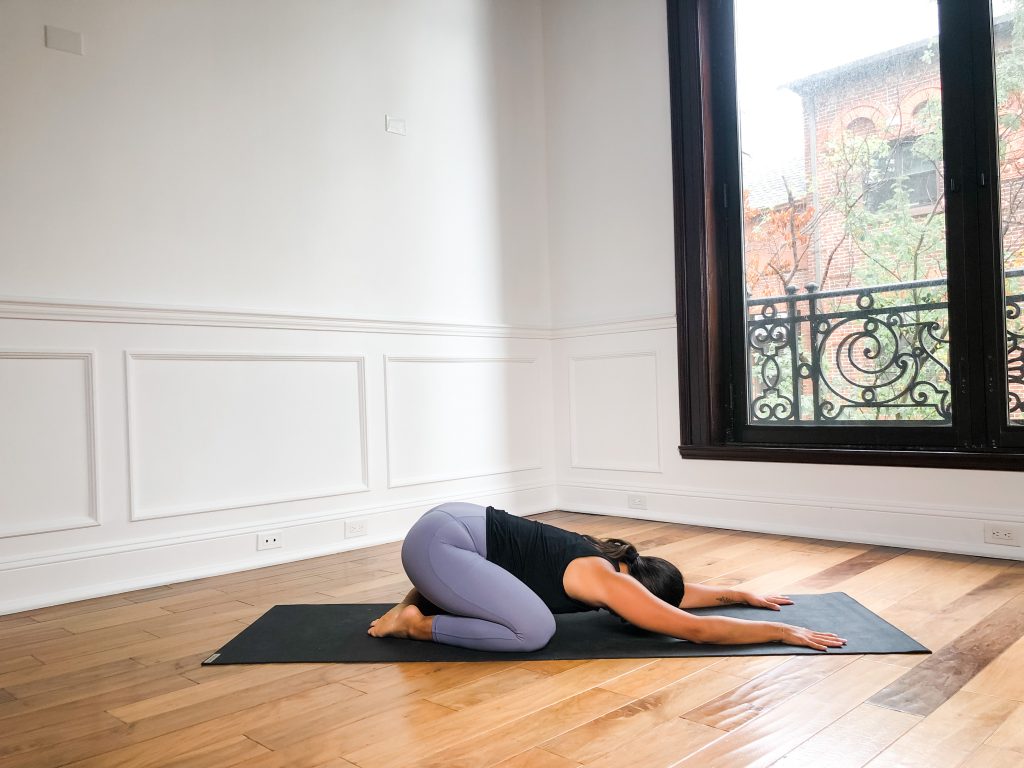
If there’s any pose that I’d choose to begin a class with to immediately begin to calm the nervous system to ready oneself for full surrender, it would be child’s pose. The head is lowered, the body is close to the floor and in a contracted position, and the body is symmetrical.
How to:
- From a tabletop position, take the big toes together and widen the knees enough so the pelvis can sit back comfortably over the heels of the feet.
- Rest your forehead on the floor. If your head does not reach the ground, take a blanket or block beneath the forehead.
- Stretch the arms forward with the palms and forearms relaxed on the ground, or wrap the arms around the legs to reach the hands towards the feet.
Supporting Pose 2: Warrior II (Virabhadrasana II)
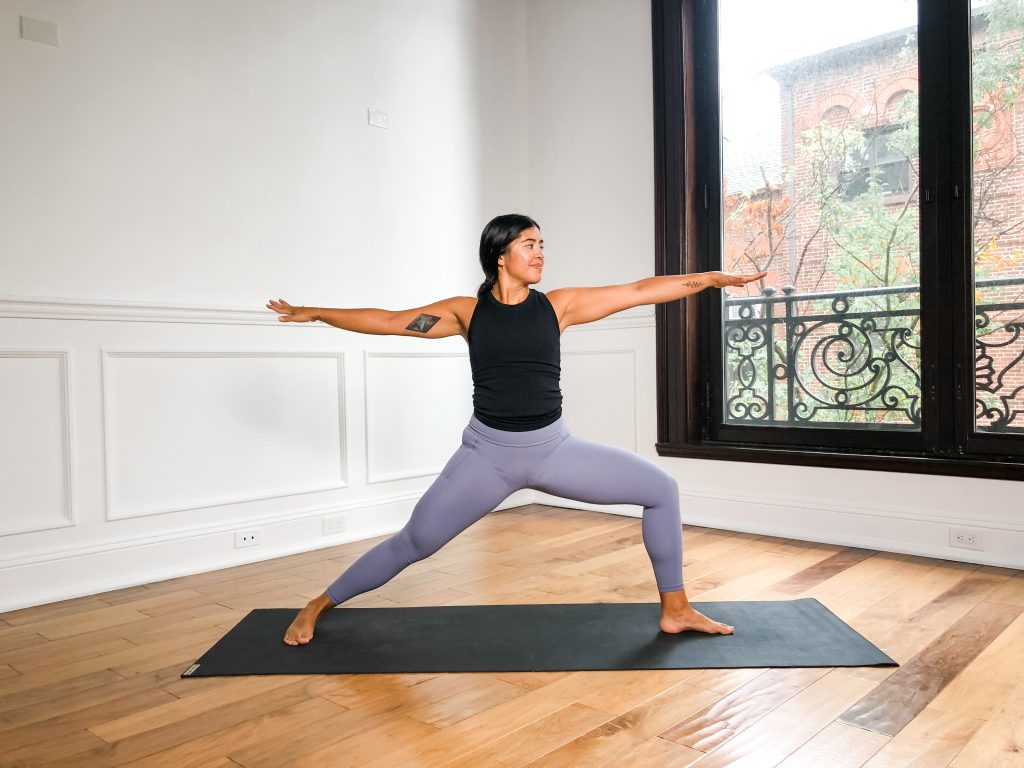
Warrior II being one of the main standing postures can be pretty familiar and grounding. It is one of the more accessible open hip postures and has the ability to open up the body in preparation for deeper work.
How to:
- Facing a long edge of your mat, stand with the feet about 3 feet apart from one another with the toes parallel to each other.
- Reach the arms out into a “T” away from the heart with the palms facing the floor.
- Open up the right hip and the right toes and bend the knee to 90 degrees so that the knee is above the ankle. 90 degrees is ideal, but if the body won’t allow this right away, shorten the stance and bend the knee until the knee is over the ankle. Ensure the weight is equal in both feet.
- Take your gaze over the right middle finger.
Supporting Pose 3: Supported Shoulder Stand (Salamba Sarvangasana)
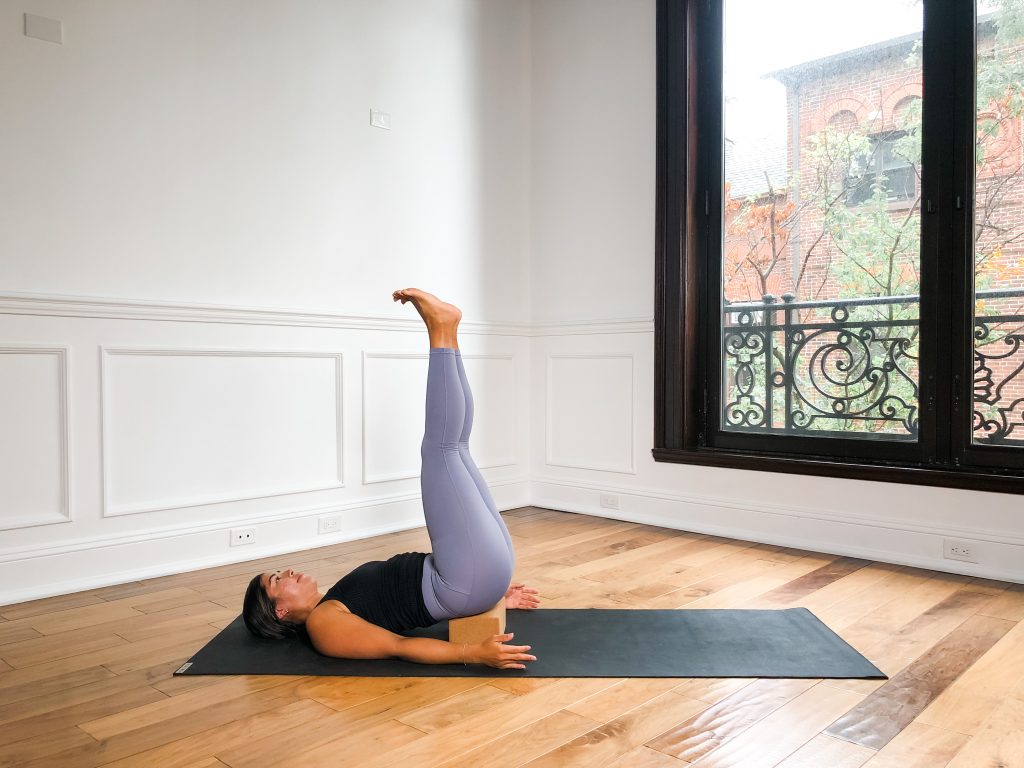
Ending the class with inversions is a great way to reverse blood flow and calm the nervous system to ready the body for final rest. Supported shoulder stand is an accessible inversion for many students compared to regular shoulder stand and headstand. Legs up the wall is another option.
How to:
- Lie on the ground with the knees bent and soles of the feet flat on the floor.
- Lift the hips away from the ground and place a block on the lowest setting beneath your sacrum. Your sacrum is that bony plate on the back of your pelvis that combines right and left sides.
- Bring your knees in towards your chest to lift the feet off the ground and then reach the feet up towards the sky. This should feel *fairly* comfortable. If it feels like your legs and core are exerting a lot of energy to keep the legs up, the block may need to be adjusted or taking legs up the wall may be a better option.
- Allow your arms to rest by your sides and try to relax the head and shoulders.
Corpse Pose (Savasana)
How to:
- Lie on your back with your legs and arms out at about 45 degrees.
- Allow your toes to fall out naturally and allow your fingers to curl naturally.
- Gently close the eyes as you let your breath come to its normal cadence. Allow yourself to simply rest. If it helps to concentrate on a body part or concentrate on your breathing, you can do that. But eventually the goal is to even soften concentration to let presence be present.
- Rest for 5-10 minutes. Comfort is key. You can place a blanket underneath your head, beneath your knees, or over your body.
Sources: The Yamas + Niyamas by Deborah Adele


